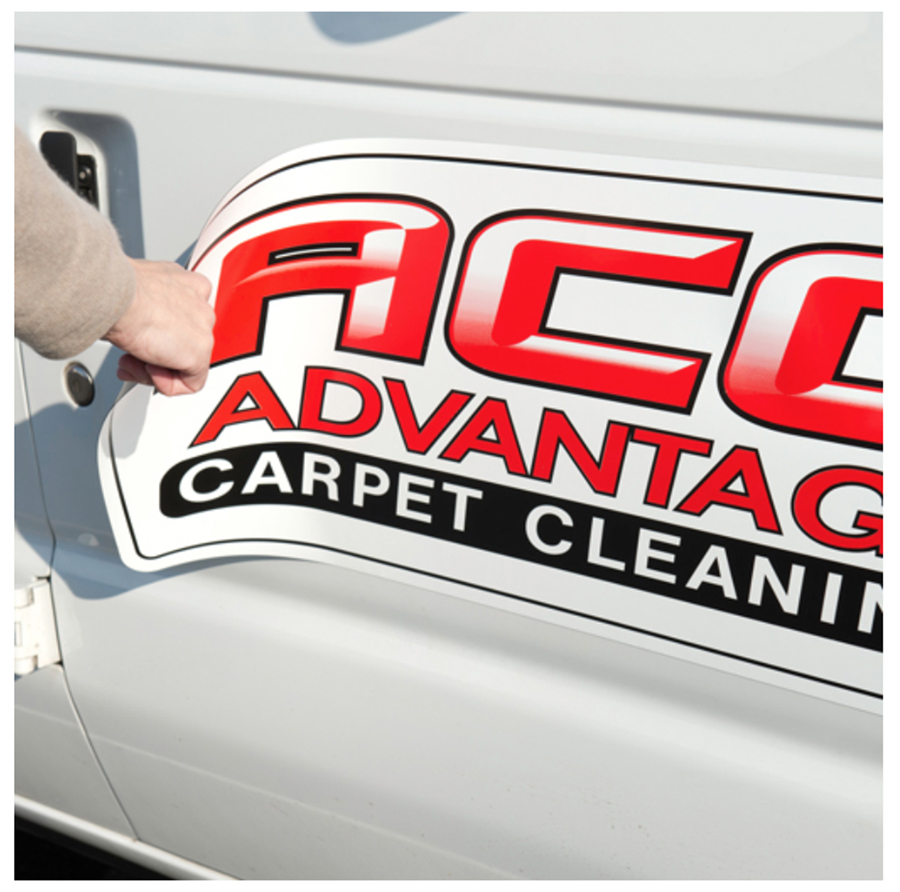When we first got into the sign business, we bought a 15-in. vinyl cutter, some vinyl rolls and transfer tape. The second or third job we landed was for a set of vehicle magnetic signs. That was our introduction to magnetic media. Over the years our equipment and methods have changed, but we’ve always offered magnetic signage. Our main purpose has been to produce magnetic signs, but today there are some really cool products that can help you broaden your magnetic offerings.
For those of you unfamiliar with magnetic media, a simple description is that a flexible sheet (often sold in rolls of 50 ft.) of material is impregnated with ferrite and rubber polymer on one side and a printable or vinyl-receptive surface on the other. For sign applications, the media is typically sold in rolls, with widths from 24 in. up to 60 in. Yes, you read that right: A number of manufacturers offer 60-in. printable media now. Thicknesses are available from .20 mm up to .76 mm. The sheeting can be easily cut and trimmed using a strong digital cutter, utility knife and with thinner media, even scissors. Your printer platen may dictate or limit the thickness you can print. And, of course, the strength of the magnetic surface is important. For example, magnetic signs have flown off the sides of vehicles while driving – probably at pretty fast speeds, but who’s to judge? For applications like these, high-strength magnetic sheet is available from a few companies and can help with those lead-footed drivers.
NEW ATTRACTIONS
Printing magnetic media has changed a lot since we did our first magnetic job. Even when we added digital printing we would print on adhesive vinyl, laminate the image and then apply it to the magnetic sheet. Now you can purchase media that accepts solvent, eco-solvent, UV, thermal transfer and even, wait for it… latex inks. Not only that, the printed image requires no lamination. This direct printing saves so much time and you can typically find printing instructions from the manufacturer’s website.
OK, vehicle magnetics are the obvious signage use for magnetic media, but can you do anything else? Of course there are new applications! A good example is dry-erase magnetic sheeting. While not directly printable, this sheeting has a magnetic backing that can adhere to a metal surface and be easily removed when not needed. You can also get the material in different colors.
Another cool application is to use magnetic media for changeable images in POP displays. To offer this as a product, you need two different media. One will be the typical printable magnetic sheet to be used for the image. This is all you need if you have a magnetic-receptive wall or frame. If that’s not the case (probably most of the time) then you can get a roll of adhesive-backed magnetic media. Just install this to the wall or frame and the printed magnetic media now has a nice place to stick.
However, what if an adhesive backed magnetic sheet won’t work due to the application? No problem! You can now get paint primers that are infused with ferrous particles. Paint it on and the surface becomes magnetic receptive. A larger wall or curved surfaces may be cost-prohibitive to cover in adhesive-backed sheeting, and magnetic primer can be just the ticket.
Advertisement
Magnetic media is something that most signmakers take for granted. You may be missing some great opportunities, particularly with the new 60-in. widths and latex ink compatibility, so consider adding some new magnetics to your menu of services.



 Photo Gallery7 days ago
Photo Gallery7 days ago
 Ask Signs of the Times1 week ago
Ask Signs of the Times1 week ago
 Paula Fargo4 days ago
Paula Fargo4 days ago
 Real Deal1 day ago
Real Deal1 day ago
 Benchmarks2 weeks ago
Benchmarks2 weeks ago
 Photo Gallery4 days ago
Photo Gallery4 days ago
 Women in Signs1 week ago
Women in Signs1 week ago
 Women in Signs1 week ago
Women in Signs1 week ago









